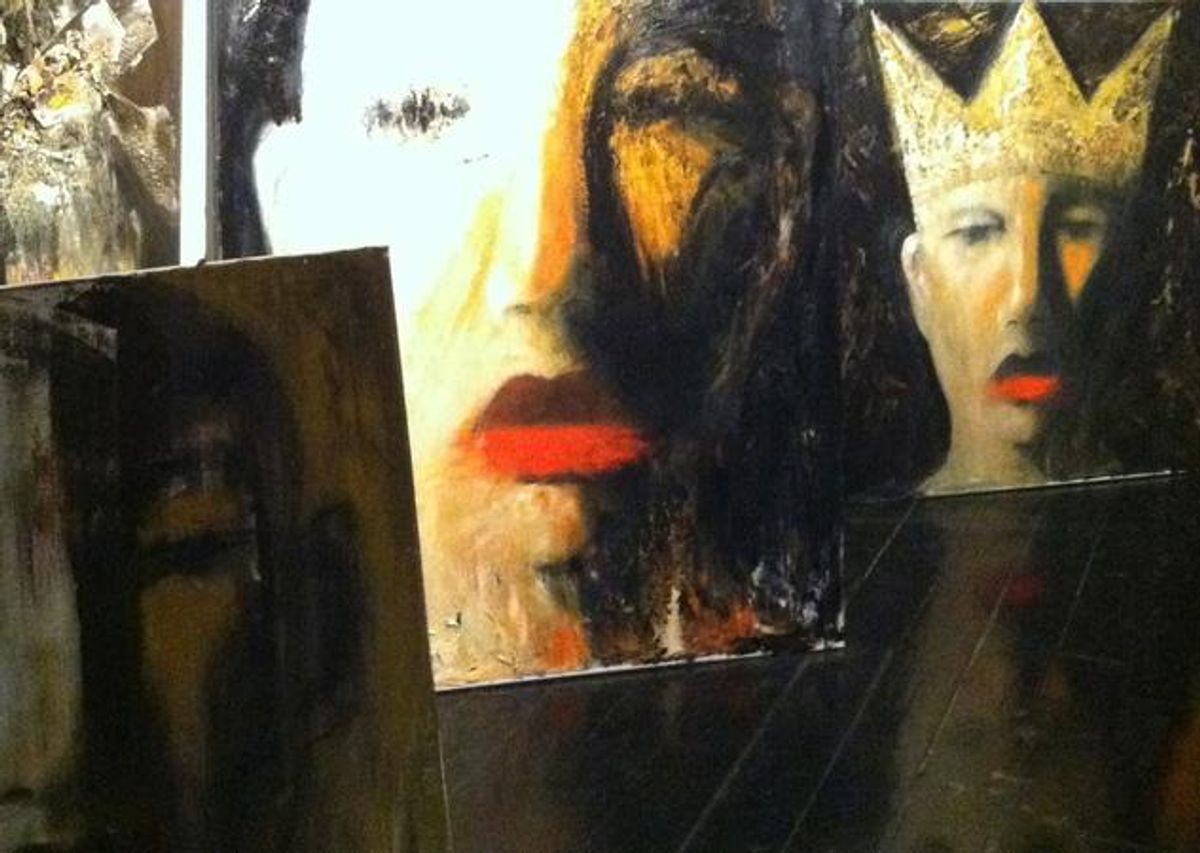Travel & Nightlife
Faces Glass and Painted

What does this New Orleans AIDS memorial say to you?
June 05 2013 6:42 PM EST
February 05 2015 9:27 PM EST
By continuing to use our site, you agree to our Private Policy and Terms of Use.


GLASS FACES:
Walking through the Faubourg Marigny neighborhood one day, I came to Washington Square Park, the corner of Dauphine St. and Elysian Fields Ave. At the northern boundary of the park--away from the short palms and ancient oaks and bands of young families and homeless alike--stands a curved steel structure from which the translucent glass faces of 34 men and women emerge. I guessed from a distance that it was an AIDS memorial. I was right.
More specifically, the structure is called The Guardian Wall and was designed in 2008 by glass sculptor Tim Tate. The faces were cast from locals living with HIV/AIDS and those who have since died have had their names added to a collection of engraved granite stones that fan out from the wall, beneath a plaque that includes a quote from Mexican author Laura Esquivel, "When do the dead die? When they are forgotten."
Tate and his design team said they wanted The Guardian Wall to "promote understanding of the human tragedy of the AIDS epidemic." They succeeded in giving the disease a human face, but I still can't decide whether it's also a celebration of those living with HIV/AIDS or just an eerie reminder that there's still no cure.
PAINTED FACES:
Walking at night along Royal Street, south of Bourbon, from a clothing-optional gay pool/bar in The Bywater called the Country Club, I passed the window of David Harouni's gallery. Dozens of faces, seemingly the same but slightly different, stared back. They could be a specific person or no one at all. It turns out, they're all Harouni.
Born in Iran, Harouni's parents moved to Israel to raise him, but were ultimately forced to return to Iran, a move that made the naturally introverted Harouni feel even more alienated. He felt like an outsider among his fellow Iranians. When the revolution took place, a teenaged Harouni, already in boarding school in Maryland, found himself further entrenched in the States but no more at home.
"My life, as my canvas, consists of building a life, collecting memories and abandoning them, only to start over; painting and erasing and painting again," he explains in his artist's statement. "But each layer is not entirely erased. It is there, just hiding underneath the new layer and providing it with depth and background."
Harouni's journey to the Big Easy speaks to New Orleans's origins and its history of welcoming disperate communities. It opened its arms to French and Spanish and Brits and Haitians and Free Born blacks and Cubans, and created distinct cultures, such as Louisiana Creole and jazz, and a unique yet universal spirit summed up by a Cajun French cheer, "Laissez les bons temps rouler," or "Let the good times roll."
CLICK HERE FOR THE REST OF THIS SERIES, "CHRISTIAN LADIES AND BIKER BOYS."